33 Keys to Decoding the Korean Wave, Hallyu #24 Nam June Paik
#24 ‘Godfather of video art’ Nam June Paik and his descendants
*한류를 이해하는 33가지 코드 #24 백남준과 후예들 <Korean version>
https://www.nyculturebeat.com/?mid=Focus&document_srl=4085256
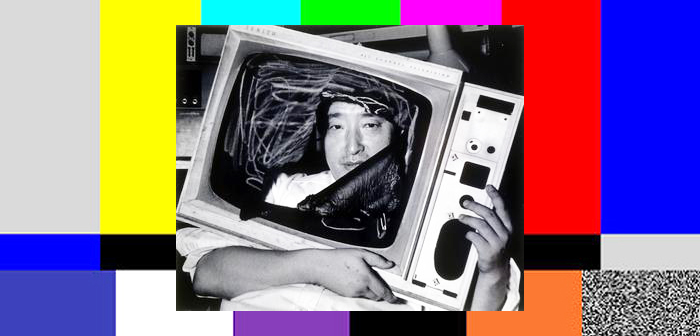
Nam June Paik 1983, Photo by Young-kyun Lim
“I want to shape the TV screen canvas as precisely as Leonardo, as freely as Picasso, as colorfully as Renoir, as profoundly as Mondrian, as violently as Pollock and as lyrically as Jasper Johns.”
It is unknown when humans began drawing pictures or making sculptures. It’s just an ancient thing. However, no one disputes the date of birth of video art. Video art was born in March 1963, and was created by Nam June Paik (1932-2006). Paik, who studied aesthetics, music history, and philosophy at the Universities of Tokyo, Munich, and Cologne, became a pivotal figure in the avant-garde movement. After encountering American composer John Cage (1912–1992) and German artist Joseph Beuys (1921–1986) in Germany, he became a leading participant in Fluxus—an experimental art movement that blurred the boundaries between art, performance, and everyday life.
Nam June Paik opened his first solo exhibition, “Exposition of Music-Electronic Television,” in March 1963 at Galerie Parnass in the West German city of Wuppertal. Using 13 used TV sets as monitors, Paik presented a striking optical pattern, marking the debut of the first video art showcased by the “culture terrorist from Asia.”
The following year, Nam June Paik moved to New York. At the time, the New York art world was dominated by abstract expressionism and pop art. Curators were not interested in foreign artists. Nam June Paik even self-deprecatingly called himself a “yellow peril.” He once said, “I was a poor man from a poor country, so I had to make people happy at every moment.”
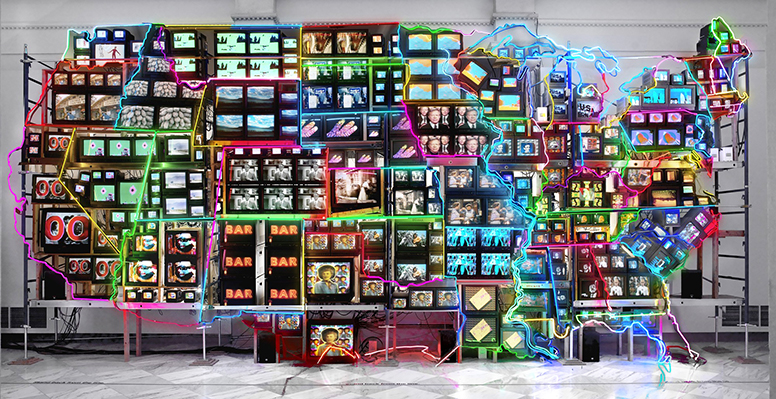
Nam June Paik, Electronic Superhighway: Continental U.S., Alaska, Hawaii, 1995, Smithsonian American Art Museum
On October 4, 1965, Nam June Paik purchased the Sony Potapak, the world’s first portable video camera. As soon as the Sony Portapack was delivered to him, Paik took a taxi and took close-up photos of Pope John Paul VI’s motorcar parade during his visit to New York. Then, that afternoon, Paik gathered with friends at Café a Go-Go in Greenwich Village and showed them the 20-minute tape. That day was the day video art was born in New York.
Nam June Paik, known as the “Father of Video Art” and the “George Washington of Video Art,” passed away in Miami Beach on January 29, 2006. In The New York Times obituary titled “Nam June Paik, 73, Dies; Pioneer of Video Art Whose Work Broke Cultural Barriers,” art critic Roberta Smith described Nam June Paik as “the most Pop of the Pop artists.”
“Mr. Paik’s career spanned half a century, three continents and several art mediums, ranging through music, theater and found-object art. He once built his own robot. But his chief means of expression was television, which he approached with a winning combination of visionary wildness, technological savvy and high entertainment values. His work could be kitschy, visually dazzling and profound, sometimes all at once, and was often irresistibly funny and high-spirited.”
-Roberta Smith, NYT-
In the wake of Nam June Paik, his successors are actively involved in artistic pursuits. Nam June Paik's influence resonates strongly in the video art of artists such as Joan Jonas, Bruce Nauman, Bill Viola, Tony Oursler, Christian Marclay, Doug Aitken, Pipilotti Rist, and Teresa Hak-kyung Cha.
8 Descendants of Nam June Paik
#Joan Jonas
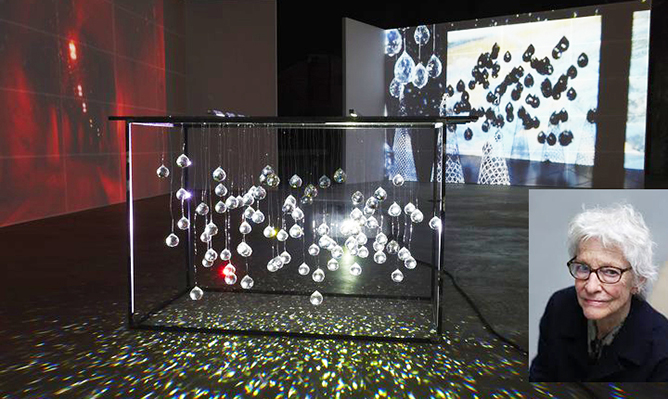
Joan Jonas, Reanimation © Joan Jonas : Artists Rights Society (ARS), New York : DACS, London
“Pioneer of performance art” Joan Jonas (1936- ) is known for her meditations on bodies, space, time, and nature combined with video art. Jonas was a neighbor of Nam June Paik in the same building on Mercer Street in SoHo, Manhattan. In 1970, Joan Jonas went to Japan with sculptor Richard Serra, where she became fascinated by the traditional mask dance Noh, and she returned with the purchase of the Sony Portapack, a portable video camera of the type that Nam June Paik had been using in his work.
With this camera, Jonas produced the black-and-white shorts “Veil” (6 minutes) and “Paul Revere” (9 minutes) with Richard Serra in 1971. She did her first performance using her video in 1972, in “Organic Honey’s Visual Telepathy.” Since then, Jonas has blended video, sculpture, drawing, sound, text, sets, theater, dance, and performance with themes such as figures in landscapes, ritualistic use of objects and gestures, and the vulnerability of the natural environment.
Joan Jonas was born in New York in 1936 and she studied art at Mount Holyoke College in Massachusetts. She received a master’s degree in sculpture from Columbia University, after which she studied sculpture and painting at the Boston Museum. Her influences during the 1960s included John Cage, choreographers Trisha Brown and Yvonne Rainer, and composers Philip Glass and Steve Reich. In 2015, she was selected as the artist for the American Pavilion at the 56th Venice Biennale, where she exhibited her multimedia installation “They Come to Us Without a Word.” In 2018 she opened her large-scale retrospective “Joan Jonas” at Tate Modern in London. The Museum of Modern Art (MoMA) in New York will have on view a special exhibition “Joan Jonas: Good Night Good Morning” from March to July 2024.
# Bruce Nauman
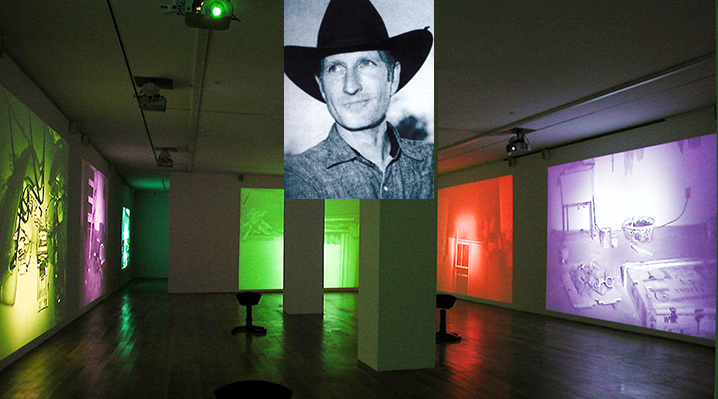
Bruce Nauman, Contrapposto Studies, i through vii, 2015/16, Seven-channel video, MoMA PS1
*Bruce Nauman: Disappearing Acts, MoMA PS1 <YouTube>
In the retrospective exhibition “Bruce Nauman: Disappearing Acts” held at MoMA PS1 in Queens (October 2018 - February 2019), Bruce Nauman (1941- ) showcased a diverse spectrum of 165 works, strongly influenced by Nam June Paik. The exhibition featured not only neon art, drawing, printmaking, photography, and sculpture but also video, film, and performances.
Born in 1941 in Fort Wayne, Indiana, Bruce Nauman earned a master’s degree in mathematics and physics from the University of Wisconsin-Madison and later studied art at the University of California, Davis. He once worked as an assistant to artist Wayne Thiebaud. In 1967, Bruce Nauman created his ten-minute, 16mm film titled "Walking in an Exaggerated Manner Around the Perimeter of a Square." Using a Sony Portapak camera borrowed from the gallerist Leo Castelli, Nauman recorded himself slowly traversing lines of masking tape affixed to the floor of his studio.
Nauman exhibited as the U.S. representative at the Venice Biennale in 1999 and received the Golden Lion for a U.S. artist at the Venice Biennale in 2009. In 2004, Time magazine included Nauman in its list of the “100 Most Influential People in the World.” In 2020, a retrospective exhibition, “Bruce Nauman,” was held at the Tate Modern in London. In 1986, he married painter Susan Rothenberg (1945-2020), and they worked on their ranch near Galisteo, New Mexico.
*'Disappearing Acts', MoMA PS1, 2018
#Bill Viola
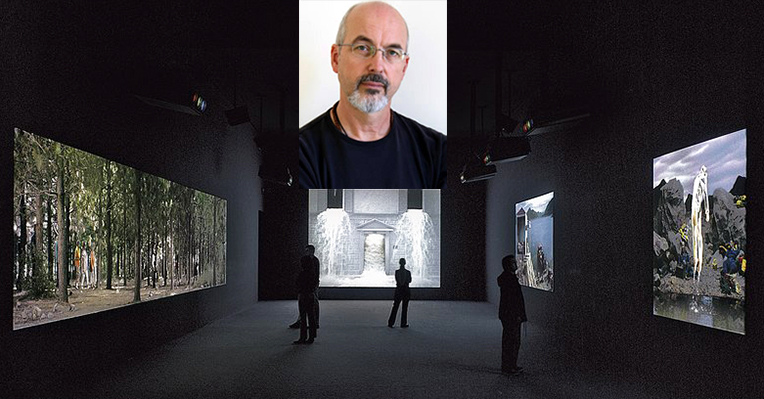
Bill Viola, Going Forth By Day, 2002, Five-part video and sound installation, color video projection with four channels of sound, 36 min.
*Bill Viola, The Crossing, 1996, two channels of color video projection, 10. 57 min.
Bill Viola (1951- 2024) is a video artist who has explored birth, death, the world of unconsciousness and consciousness, the four elements of nature such as water, fire, earth, and air, Zen Buddhism, Christian mysticism, and Islamic Sufism. His large screen takes you into an ecstatic world of meditation. Viola was Nam June Paik’s assistant.
Bill Viola, born in Queens, New York, in 1951, attended PS 20 in Flushing. He majored in experimental research at the School of Visual and Performing Arts at Syracuse University. After graduating from college in 1973, he worked as a video technician at the Everson Museum of Art in Syracuse and later worked closely with Nam June Paik as his assistant, gaining hands-on experience in video art. Viola studied with composer David Tudor and was active in his new music group “Rainforest.”
In 2018, he entered the computer game industry by releasing the video game “The Night Journey.” He had a solo exhibition “Bill Viola, Encounter” at the Busan Museum of Art in South Korea from October 2020 to April 2021.
#Tony Oursler
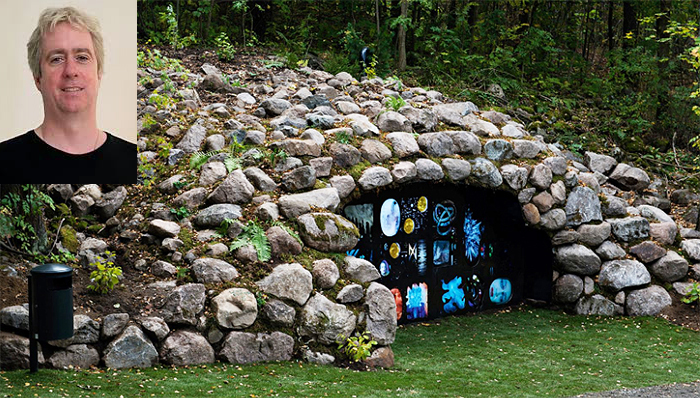
Tony Oursler, Klang, Installation view, Ekeberg Sculpture Park, Ekebergparken, Norway, 2013
Tony Oursler (1951- ) is an artist who expands video art onto objects such as dolls, mannequins, and panels. In doing so, he infuses humor into the tight tension between reality and fiction, and the real and the imaginary. His large dolls serve as tools revealing the complexities of the human psyche. Oursler explores the negative impact of media, including television, on the human soul and the sense of alienation it can bring. He also addresses environmental issues such as ecosystem pollution.
Born in Manhattan in 1957, Tony Oursler grew up in Nyack, New York. He studied at the California Institute of the Arts (CalArts) with artists like Mike Kelley and Sue Williams. In 1976, he became captivated by the teachings of Nam June Paik.
After relocating to New York in 1981, Oursler began working with the non-profit organization Electronic Arts Intermix (EAI), dedicated to video and media artists. In 1985, when Oursler exhibited his video work “Diamond: The 8 Lights (Spheres of Influence)” at the Pompidou Center in Paris, Nam June Paik visited him, leading to a lasting friendship. In 2012, Oursler held a solo exhibition in Seoul, and his video sculpture “A Guard Post” is installed in Namgang Park in Tongyeong, Gyeongsangnam-do.
#Christian Marclay
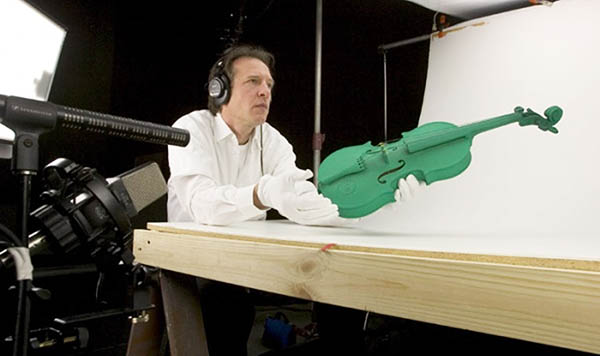
Christian Marclay, Production still from Shake Rattle and Roll (Fluxmix), Walker Art Center, Minneapolis, 2004
*Christian Marclay - The clock, 2010-2011 <YouTube>
Christian Marclay (1955- ) is a video artist, composer, and sound designer best known for his 2012 exhibition “The Clock” at MoMA in New York. The acclaimed piece, winner of the Golden Lion at the 2011 Venice Biennale, meticulously collects and edits clock scenes from films worldwide to match real-time over a 24-hour period.
From train station clocks to emergency room clocks, living room clocks in affluent homes to clocks held by bank robbers, “The Clock” transcends time zones, creating a surreal 24-hour montage. Time becomes the antagonist, reflecting how our lives are often governed by the stress of time. Marclay suggests that we find happiness when we stop constantly chasing time and take a moment to reflect.
Similar to Nam June Paik, Marclay, also an experimental musician, presented a symphony-like exhibition at the Walker Art Center in Minneapolis in 2004, titled “Shake Rattle and Roll: Christian Marclay.” The exhibition featured 16 videos, created by gathering over 500 Fluxus works, including pieces by Nam June Paik, Yoko Ono, Ben Vautier, and Joseph Beuys, held in the Walker’s collection.
Born in 1955 in San Rafael, California, Christian Marclay’s father was Swiss, and his mother was American. Marclay was raised in Geneva, and studied at the Geneva School of Fine Arts, Massachusetts College, and graduated from Cooper Union in New York. During his time at Cooper Union in the 1970s, he developed an interest in Fluxus movement and artists like Joseph Beuys, John Cage, Nam June Paik, Yoko Ono, and Vito Acconci. Marclay's wife, Lydia Yee, of Korean descent, was a curator at the Bronx Museum and is currently a curator at the Whitechapel Gallery in London.
#Doug Aitken
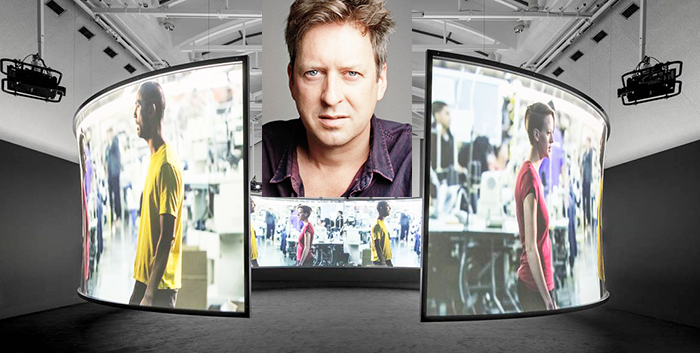
Doug Aitken, SONG 1, 2012/2015. 7-channel composited video installation. Schirn Kunsthalle, Frankfurt, 2015
*Doug Aitken: sleepwalkers, Documentation of the exhibition <YouTube>
In the winter of 2007, eight large screens were installed on the exterior walls of the Museum of Modern Art (MoMA) and nearby buildings in New York, a city that never sleeps. Every evening, the daily routines of actors such as Donald Sutherland, Tilda Swinton, Chan Marshall (Cat Power), Seu Jorge, and Ryan Donowho were showcased in close-up, depicting scenes of sleeping, bathing, strolling, and playing. Times Square billboards transformed into human forms, and the building facades turned into a multiplex cinema, creating “Sleepwalkers (2007. 1. 16-2. 12).”
Born in 1968 in Redondo Beach, California, Doug Aitken studied at the Pasadena Design Center and moved to New York in 1994. Recipient of the international art award selected by the Nam June Paik Art Center in Korea in 2012, Aitken held his first solo exhibition in Korea in 2013. The exhibition featured “Electric Earth,” the winner of the Golden Lion at the 1999 Venice Biennale. The piece portrays a day in the life of a Black man, traversing a car wash, parking lot, and an empty lot near the airport after waking up in the morning, seemingly dominated by electricity.
According to Aitken, the character appears as if he were the last man on Earth at the end of the century. Through the movement of the character, the artist illustrates the flow of time and the segmentation of space, inviting the audience to navigate the maze-like space and experience a unique spatio-temporal journey.
#Pipilotti Rist
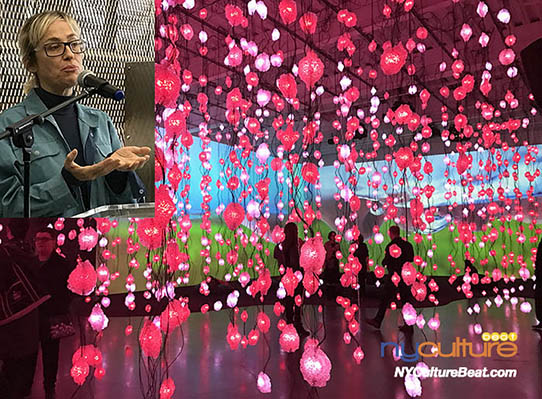
Pipilotti Rist, Pixel Forest 2016, New Museum, New York
In the fall of 2016, the New Museum in Manhattan's Lower East Side hosted a retrospective exhibition, “Pixel Forest,” by Swiss feminist artist Pipilotti Rist (1962- ). The gallery resembled a vast and colorful amusement park. Visitors lay on beds and leaned on cushions, immersing themselves in the spectacular fantasy utopia painted by Rist through her videos.
Pipilotti Rist transcended the solemnity, esotericism, and black humor of previous white male video artists, transforming the museum into a joyous space reminiscent of a music video. Her work is delightful, sensory, playful, childlike, humorous, and, above all, infused with the joy of a music video.
Pipilotti Rist studied commercial art, illustration, and photography at the University of Applied Arts in Vienna before majoring in video art at the Basel School of Design. After graduating, she was a member of the Swiss all-female rock band Les Reines Prochaines. In 1997, she participated in the Venice Biennale and received the Premio Prize. In 2012, she held the exhibition “Pipilotti Rist: Spear To Heaven” at the Leeum, Samsung Museum of Art, in Seoul.
*Pipilotti Rist, Pixel Forest 2016, New Museum, New York
http://www.nyculturebeat.com/?document_srl=3512208&mid=Art2
#Theresa Hak Kyung Cha, 1951-1982
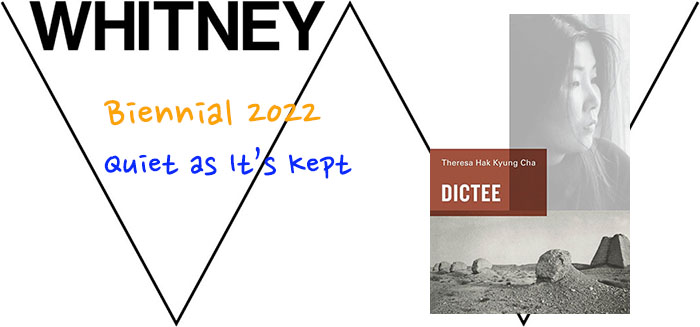
In November 1982, the lifeless body of Theresa Hak Kyung Cha, a 31-year-old Korean American artist, was discovered in a parking lot in Manhattan’s SoHo. She had gone to a building where her husband, the photographer Richard Barnes, had his office and was assaulted by a security guard, after which she was strangled to death. Theresa Hak Kyung Cha was a novelist, producer, director, and video artist.
Born in Busan, Korea, in 1951, during the Korean War, Theresa Hak Kyung Cha moved to Hawaii at the age of 11 and later grew up in San Francisco. After studying art, literature, ceramics, and performance at the University of California, Berkeley, she earned two degrees (MA, MFA) while working at the Pacific Film Archives. She further pursued her education in film at the Centre d’Études Américain du Cinéma in Paris in 1976 before returning to the United States. She engaged in performance art at the San Francisco Museum of Modern Art and later moved to New York in 1980. While working in the design department at the Metropolitan Museum of Art, she also taught video art at Elizabeth Seton College.
Two months before her death, Cha published the avant-garde novel “Dictée,” a memoir, a history book, and an experimental meditation that interweaves the traumas of women’s lives with Korean history, exploring themes of nation, language, memory, and the loss of time. “Dictée” later received critical acclaim for its pioneering role in postmodernism, postcolonialism, and feminism, making it a widely studied work in avant-garde writing, feminist, and Asian American literature courses.
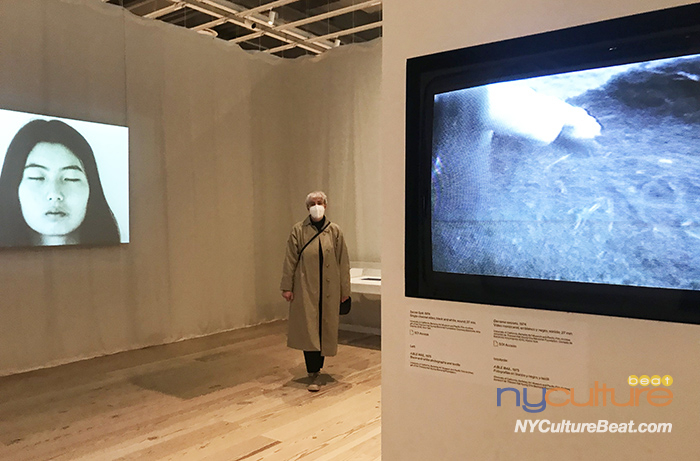
Theresa Hak Kyung Cha, Whitney Biennial 2022
In January 2021, The New York Times featured an obituary for Theresa Hak Kyung Cha in its “Overlooked” series, which highlights the lives of those who were undervalued at the time of their deaths. The article, titled “Overlooked No More: Theresa Hak Kyung Cha, Artist and Author Who Explored Identity,” included photographs taken by her husband, Richard Barnes. This series also included obituaries for other overlooked figures, such as Yu Gwan-sun, a Korean independence activist, and Kim Hak-soon, a survivor of Japanese wartime sexual slavery.
Theresa Hak Kyung Cha was posthumously invited to the 2022 Whitney Biennial under the theme “Quiet as It’s Kept.” Her video art and previous works silently engage with visitors throughout the exhibition, contributing to the ongoing conversation in 2022.
*Theresa Hak Kyung Cha at the Whitney Biennial 2022
http://www.nyculturebeat.com/?mid=Art2&document_srl=4056547
Sukie Park
A native Korean, Sukie Park studied journalism and film & theater in Seoul. She worked as a reporter with several Korean pop, cinema, photography and video magazines, as a writer at Korean radio (KBS-2FM 영화음악실) and television (MBC-TV 출발 비디오 여행) stations, and as a copywriter at a video company(대우 비디오). Since she moved to New York City, Sukie covered culture and travel for The Korea Daily of New York(뉴욕중앙일보) as a journalist. In 2012 she founded www.NYCultureBeat.com, a Korean language website about cultural events, food, wine, shopping, sightseeing, travel and people. She is also the author of the book recently-published in Korea, "한류를 이해하는 33가지 코드: 방탄소년단(BTS), '기생충' 그리고 '오징어 게임'을 넘어서 (33 Keys to Decoding the Korean Wave: Beyond BTS, Parasite, and Squid Game)."






백남준 기사를 읽으면서 이런 생각을 했습니다. 고조선서부터 오늘날까지 우리 나라의 역사를 통해 가장 위대한 인물, 세계적인 인물을 둘을 내세우라고 하면 한글을 만드신 세종대왕과 비디오 아트의 아버지인 백남준 아티스트를 꼽겠다고 망설임없이 생각했습니다. 백남준씨는 비디오 아트라는 쟝르를 불과 반세기전에 만들어서 세상을 놀라게한 예술가고 아무도 몰랐던 비디오 아트 분야를 인류와 세상에 알린 개척자이고 예술가입니다. 스티브 잡스와 분야는 다르지만 이 시대에 하나 나올까말까한 천재임을 확신했습니다. 그가 한국인이라는 게 우리에게는 영원히 빛나는 자랑입니다. 저는 60년대 후반에 백남준씨가 첼리스트인 무어에게 연주를 하면서 웃옷을 벗게하는 사진을 타임지에서 보고 놀랬었습니다. 비디오 아트가 탄생하는 과정임을 아주 뒤늦게 알았습니다. 그의 7인의 후계자중에 조앤 조나스, 피피로티 리스트라는 여성들이 있어서 눈길이 끌립니다.
-Elaine-